Here, we run through the rules and regulations of the famous highways so you can drive with confidence on your next European road trip.
What is the Autobahn?
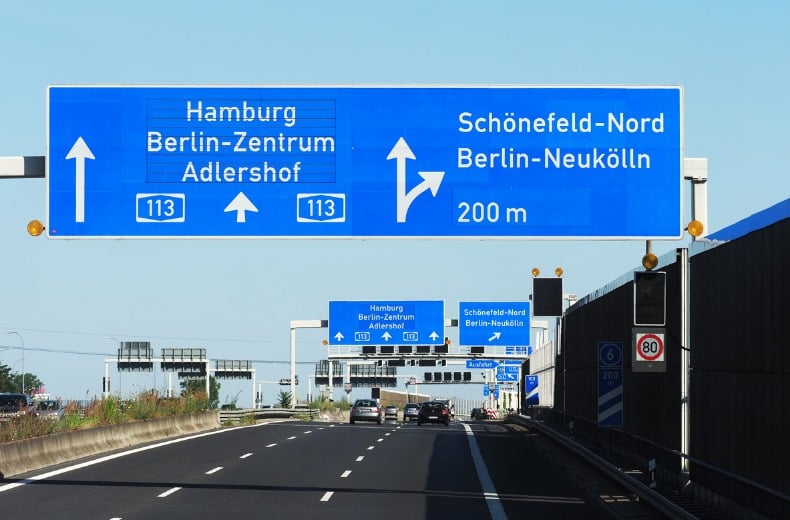
In the UK we usually use the term Autobahn to refer to German motorways, without speed limits, however, in Germany, ‘Autobahn’ can be used to refer to a highway in any country. The official term is ‘bundesautobahn’, often shortened to BAB.
The federally-built roads feature at least two lanes travelling in each direction and, despite the common misconception, speed limits may apply.
There are 12,845 km of Autobahn throughout Germany, with the distinctive roads being easily identified by a unique set of blue and white signs. Another set of highways in Germany, the Gelbe Autobahn (yellow Autobahn), features yellow signs.
How to use the Autobahn
You’ll know you’re entering the Autobahn when you see this sign:
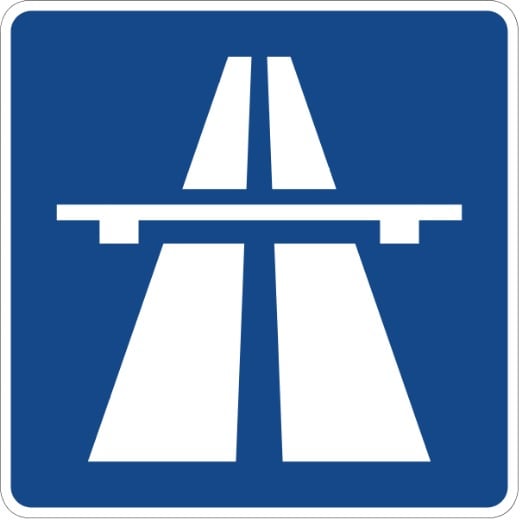
From this point on, it’s important to stay in the right lane unless overtaking. The rule works similarly to our own middle lane hogging laws.
If speed limits apply, you’ll see a black number on a round white sign outlined in red.
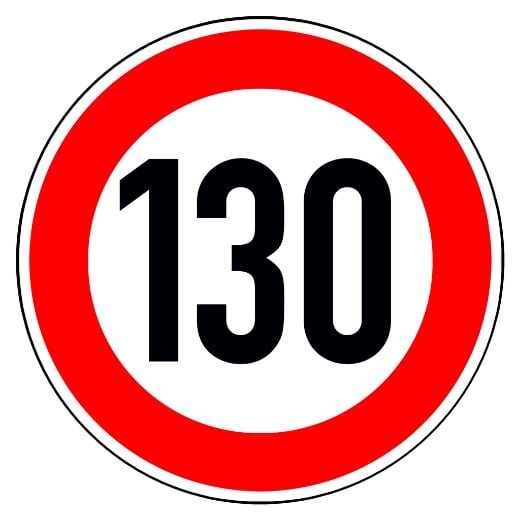
The sign indicating the end of speed limits looks like our ‘national speed limit applies’ sign:
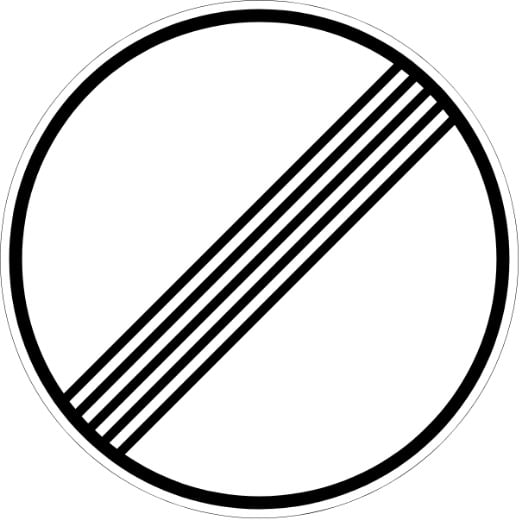
From here, previous restrictions on overtaking and speed limits no longer apply.
An advisory speed limit of 130kph or 81 mph is recommended for all vehicles under 3.5 tonnes including passenger cars above 3.5 tonnes.
Remember, on roads without speed limits, it’s likely that someone is travelling faster than you, so you should move out of the left lane as soon as it’s safe to do so.
The hard shoulder
Like our motorways and unlike our ‘all lane running’ smart motorways, the Autobahn features a hard shoulder.
You shouldn’t use the hard shoulder unless you’re given permission by this sign:
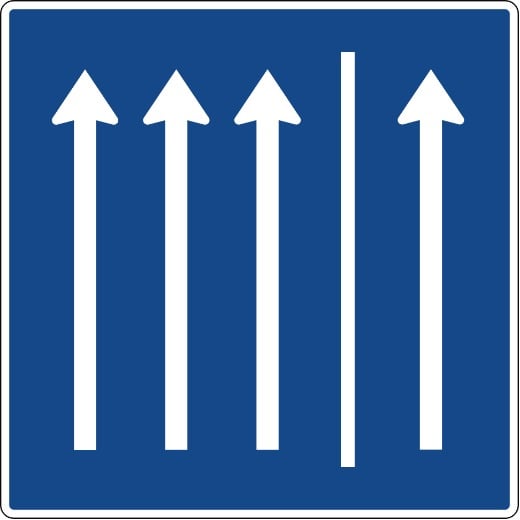
Or instructed to by this sign:
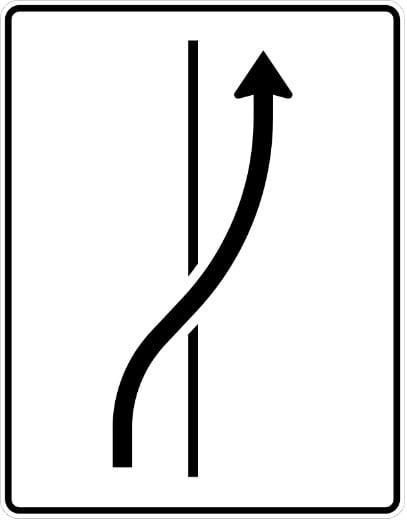
Roadworks
Keep an eye out for roadworks on the Autobahn by looking for yellow road markings.
The yellow lines have priority over white lines and might instruct you to stay within a lane over a stretch of road.
Exiting the Autobahn
When leaving the Autobahn you can drive faster than vehicles to your left after the exit lanes begin (look out for the broken white line).
Emergency vehicles on the Autobahn
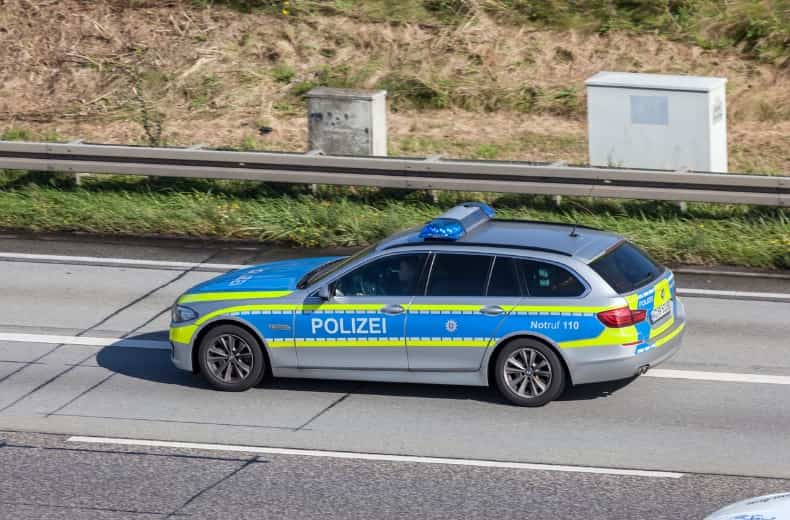
Emergency vehicles have right of way on the Autobahn and when traffic is moving slowly it’s important to create a ‘Rettungsgasse’ or emergency vehicle lane.
If there are two lanes in each direction, you should move your car to the far right or far left depending on your position to create a middle lane for emergency vehicles.
If there are more than two lanes, drivers in the right-side lanes should move further right, while drivers in the third or fourth left lane should stay on the far left.
You might spot the specialised police force while on the German motorways. The ‘Autobahnpolizei’ are similar to our highway patrol officers and have even inspired a series of Autobhan Police simulator computer games.
- Driving in Germany - the law and what to pack
- German road signs - brush up before your trip
- The best road trips in Germany
Autobahn speed limits
Although many drivers dream of hitting the Autobahn to drive without speed limits, some sections of the motorways enforce restrictions.
In fact, roughly 30% of the Autobahn network has speed limits.1
This figure breaks down to:
| Speed limit | Coverage of Autobahn |
|---|---|
| 130 kph | 4.7% |
| 120 kph | 7.8% |
| 100 kph | 5.6% |
| 80 kph | 2.3% |
| 60 kph | 0.3% |
| Less than 60 kph | 0.1% |
A further 9% of the Autobahn uses traffic control systems to regulate traffic.
When driving a caravan or towing a motor home if your weight exceeds 3.5 tonnes an 80kph (50 mph) limit applies.

Instant cover available
• 24/7 rescue at the roadside
• Help to get home if your vehicle can't be fixed
• 5 star Defaqto rated cover
*T&Cs apply.

Autobahn rules and laws
The rules of the Autobahn aren’t too different to those on our own motorways, (apart from the driving on the right hand side and unlimited speed limits of course).
If you follow the rules below you can enjoy a safe and legal journey on Europe’s most famous highways.
Rule 1: Always overtake on the left.
Overtaking vehicles on the right is verboten, or forbidden, unless traffic is moving at a very slow speed, for example, in a traffic jam.
Rule 2: Slower traffic stays on the right
One of the reasons that the Autobahn allows cars to travel without speed limits is because drivers in Germany understand the importance of keeping the fast lane moving.
Even if you’re travelling at 100mph or more, someone else could be travelling faster. Once you’ve passed slower vehicles and it’s safe to do so, you should always try to switch lanes to the right.
Rule 3: Use your indicators
This one’s simple and even more important when travelling at higher speeds than what we’re used to in the UK.
Rule 4: Stick to the speed limit
Possibly the most surprising rule of the Autobahn but you’ll need to keep your eyes peeled for limits on 30% of the network.
Look out for speed limit signs similar to ours at home or instructions on overhead gantries.
Other rules of the Autobahn
You should never:
- Run out of fuel
- Reverse or make any U-turns
- Stop or park along the Autobahn
- Drive in the left lane to prevent vehicles from passing
- Tailgate and flash drivers to encourage them into right lanes
- Get out of your car when stuck in a traffic jam
When driving in Germany it’s compulsory to keep a warning triangle and first aid kit in your car at all times. You can find out more about driving in Germany, here.
Autobahn etiquette
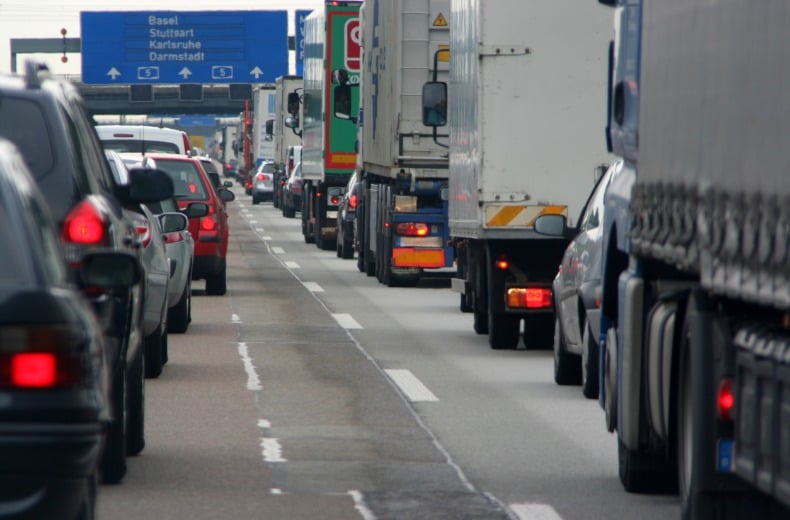
If you stick to the right hand lanes between overtaking and use your indicators in good time you shouldn’t run into trouble when travelling on the Autobahn.
Although using headlights to force other drivers to move over is considered bad practice it can be common.
If drivers try to hurry you up while you overtake another car you should stay calm and carry on with the manoeuvre in the same way you normally would.
- Smart motorways - what are they and how do you use them? | Video guide
- What to do if your car breaks down
- 10 driving habits that are secretly damaging your car

Instant cover available
• 24/7 rescue at the roadside
• Help to get home if your vehicle can't be fixed
• 5 star Defaqto rated cover
*T&Cs apply.

German Autobahn FAQ
- What is the fastest speed ever recorded on the autobahn?
The fastest speed ever officially recorded on the German autobahn is 432.7 km/h (268 mph). It was set by German racing driver Rudolf Caracciola in 1938 in a Mercedes-Benz W125 Rekordwagen.
- Why does Germany have no speed limit?
The German government passed the Road Traffic Act in 1934, where speeds in urban areas were limited to 60 km/h (37 mph). No speed limit was stated for autobahns and this hasn’t changed much. In recent years, the German government has recommended a maximum speed of 130 km/h (80 mph), however, there are no restrictions in the de-restricted sections of the autobahns.
- What is a German motorway called?
A German motorway with certain areas where there are no speed limits is called an Autobahn. They may also be known as the Bundesautobahn - or BAB.
- How fast can you go on the autobahn?
The German government recommends a maximum speed of 130 km/h (80 mph) on its motorways, however, there are no restrictions in the de-restricted sections of the autobahns - meaning drivers can reach very high speeds.










